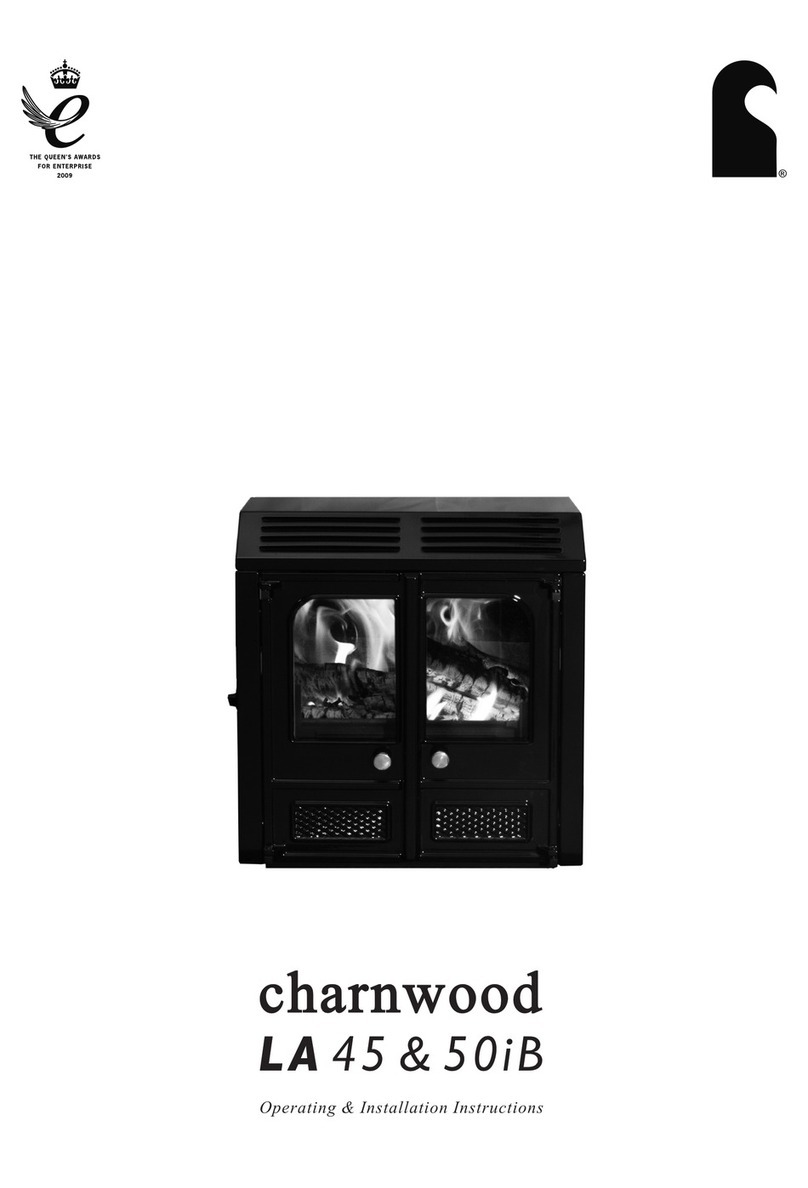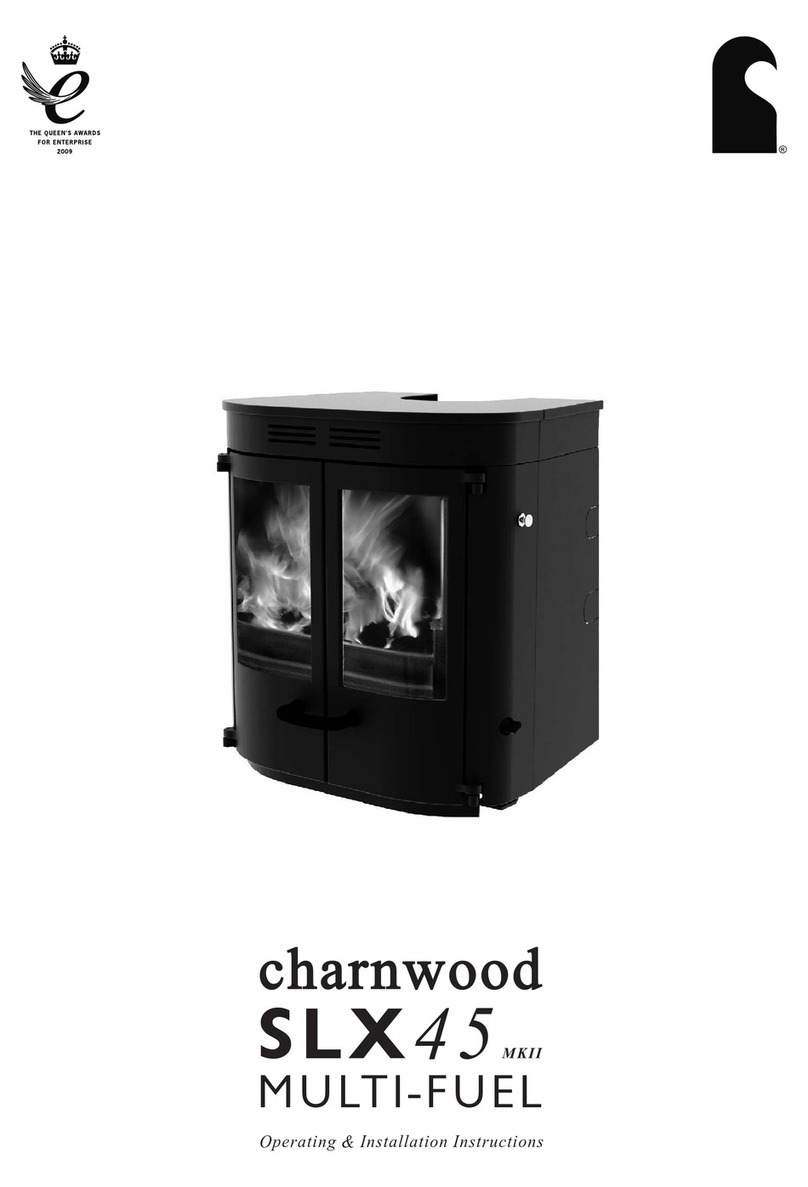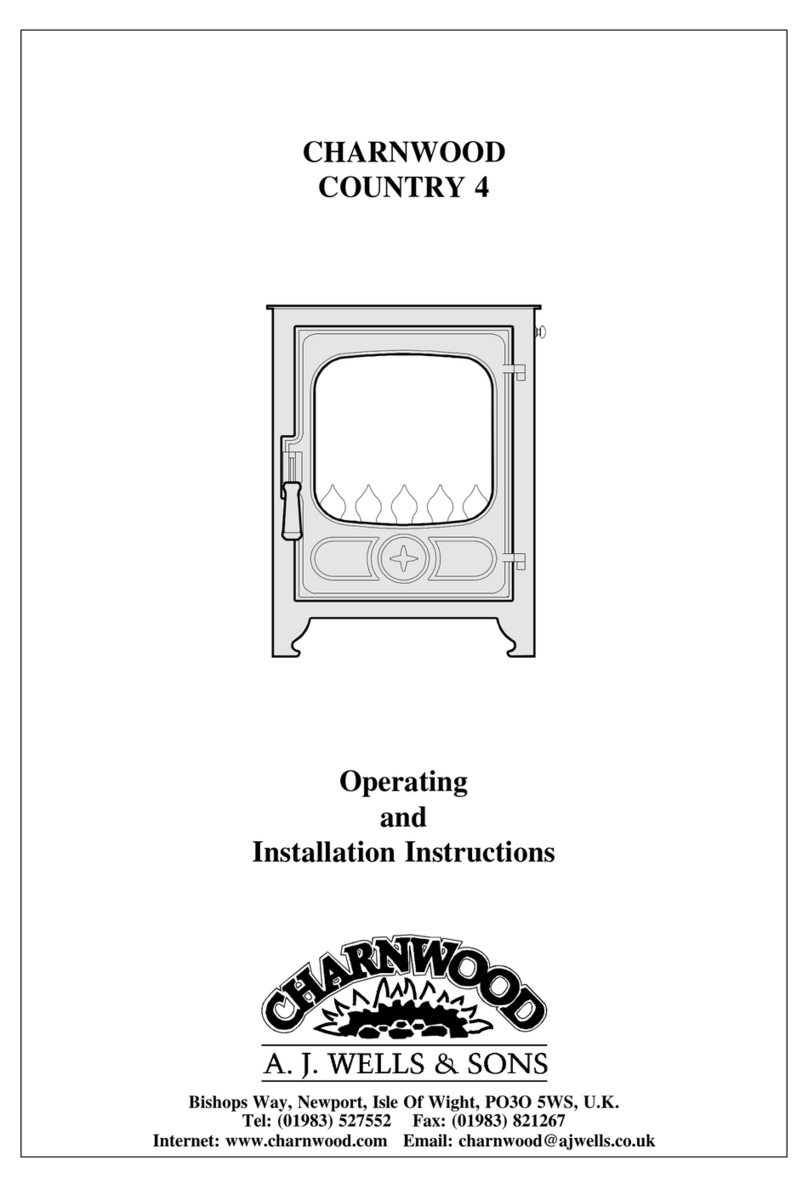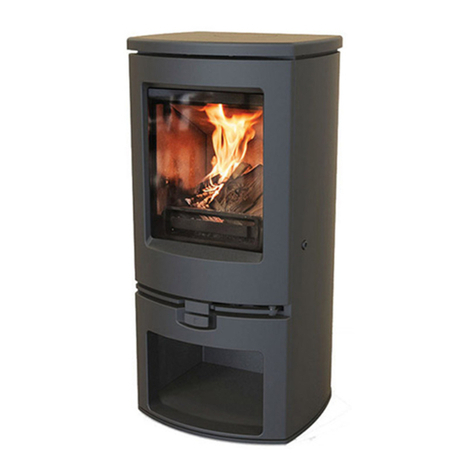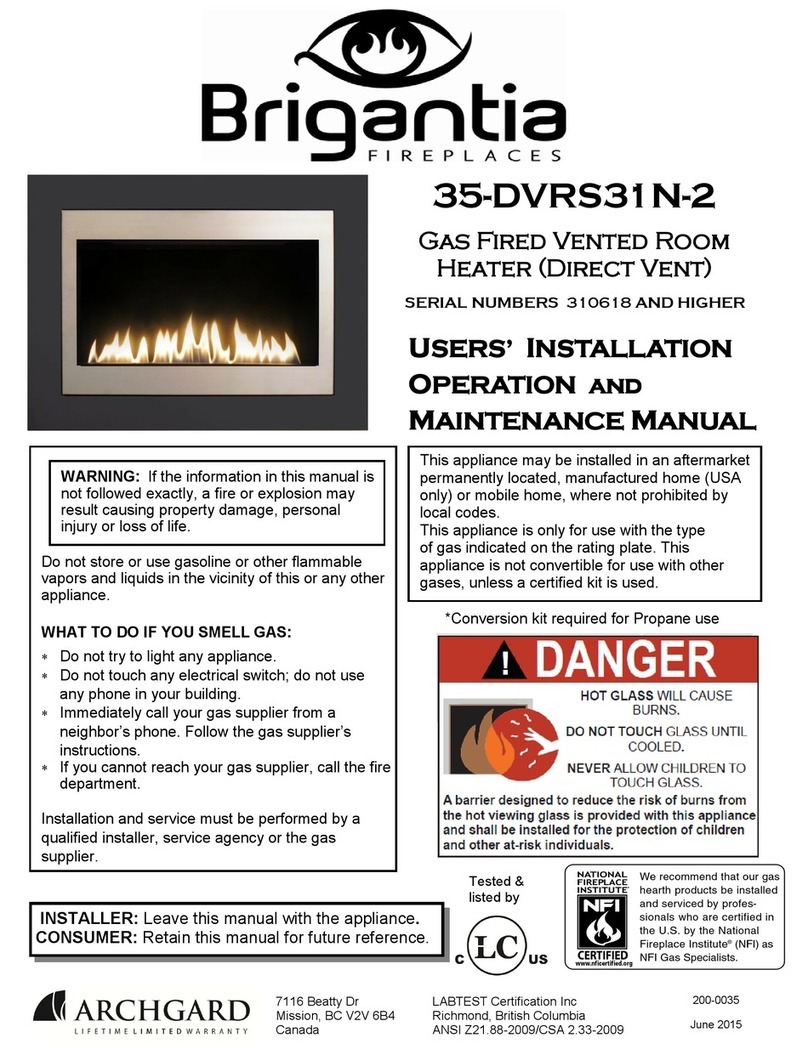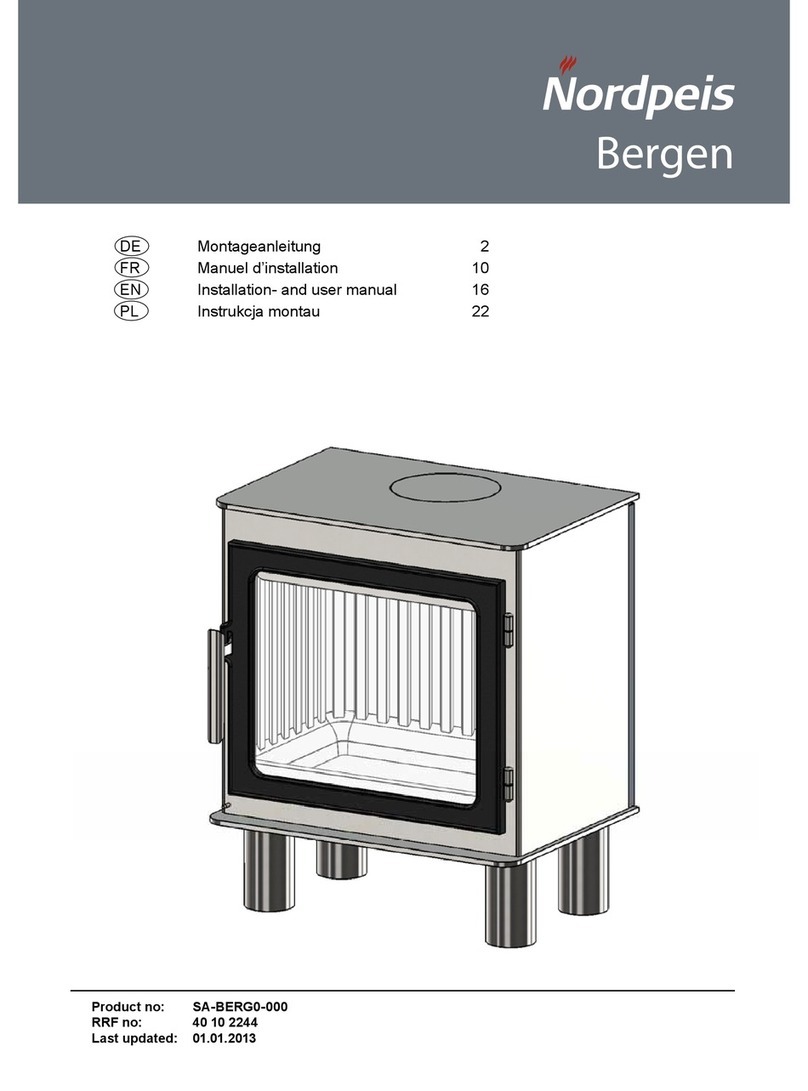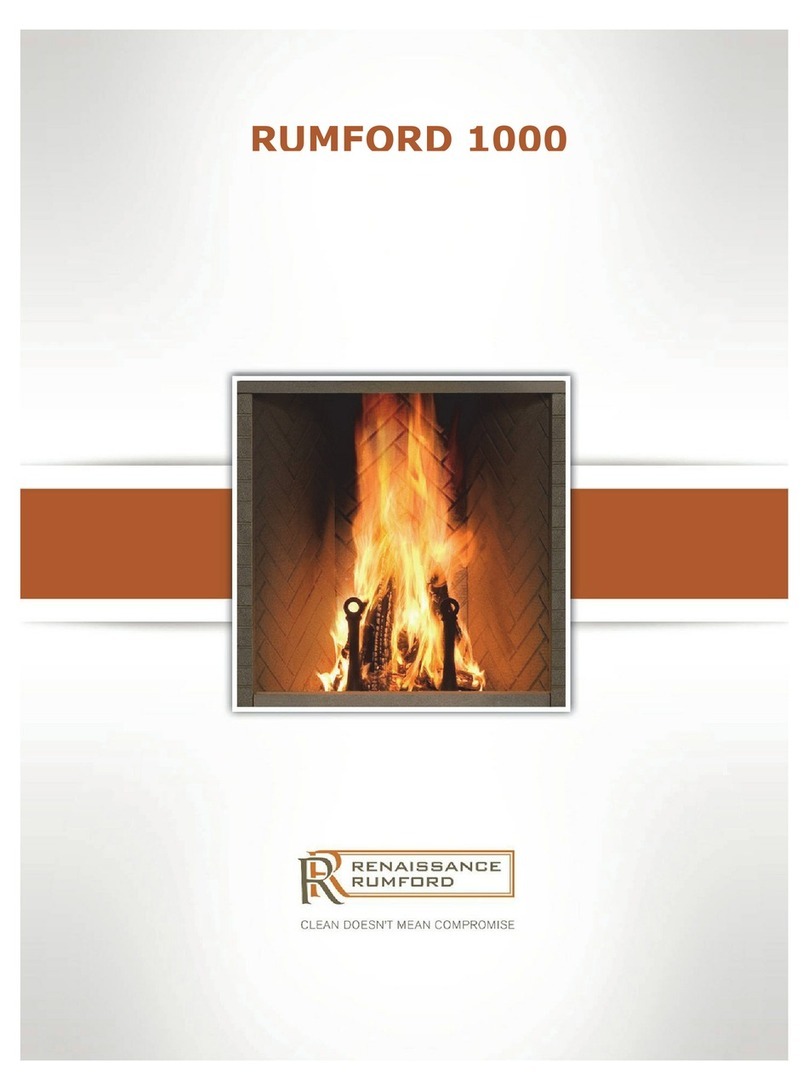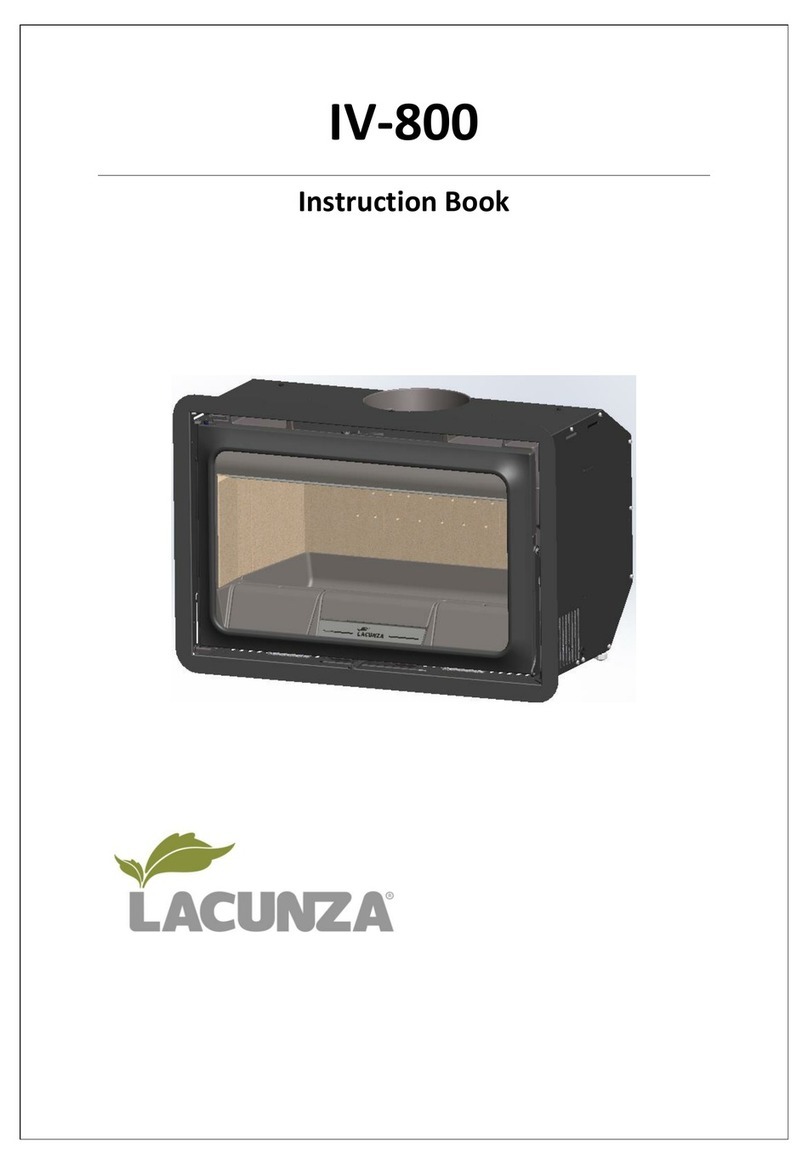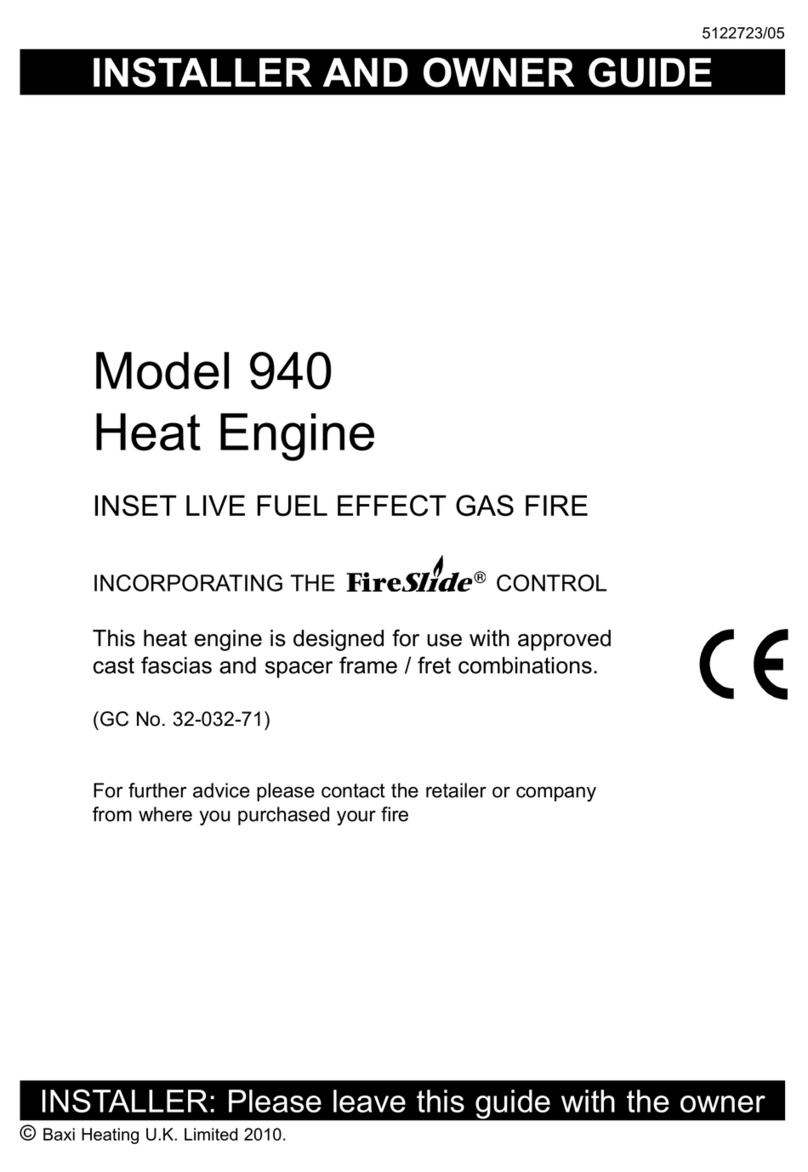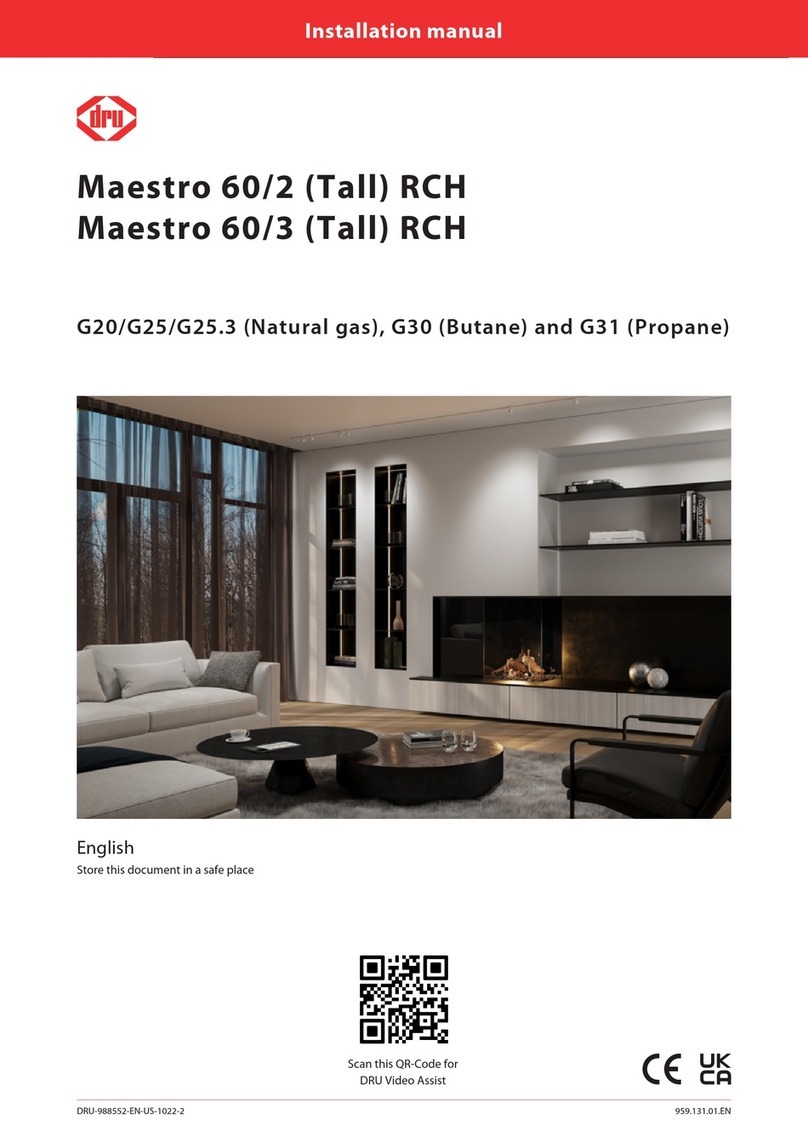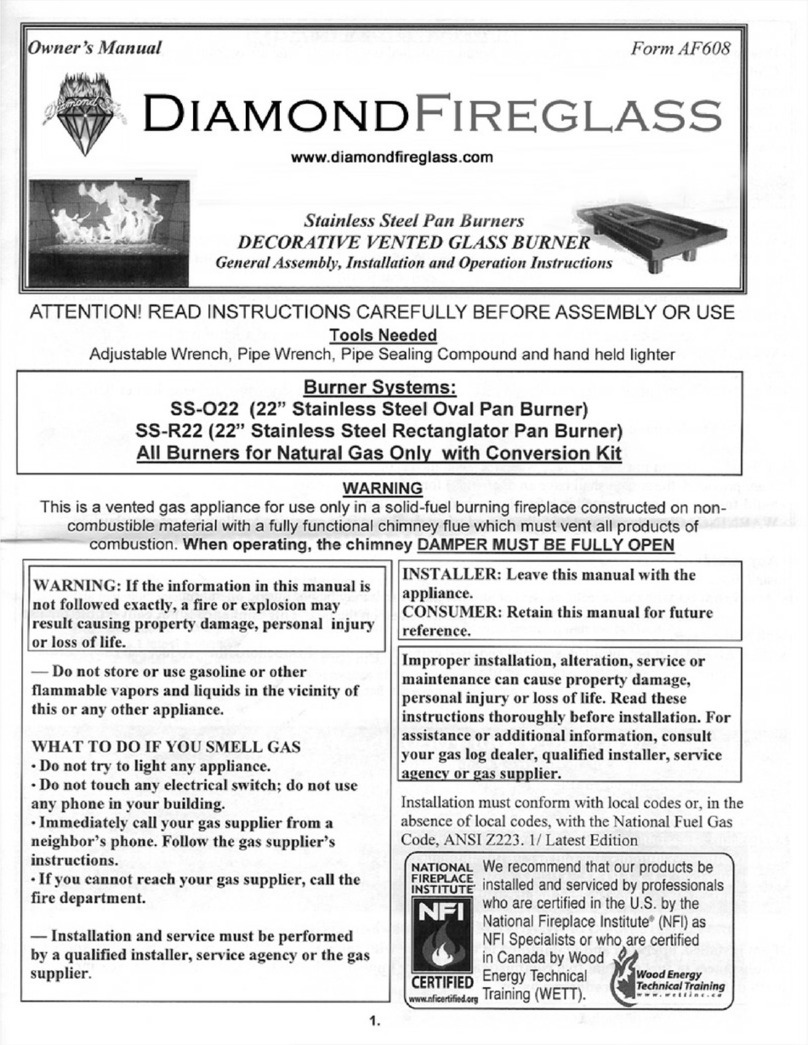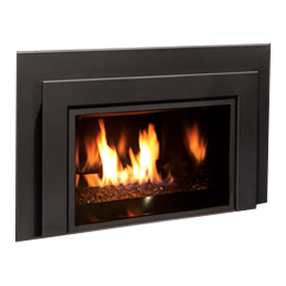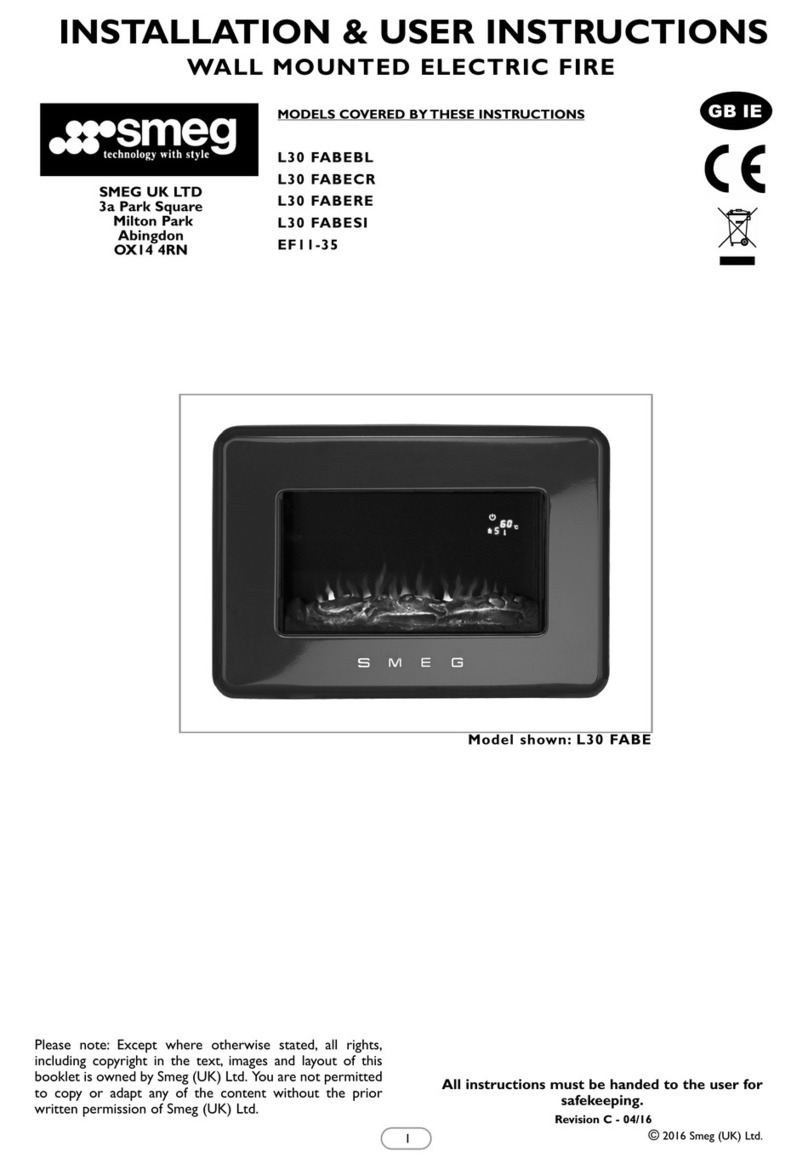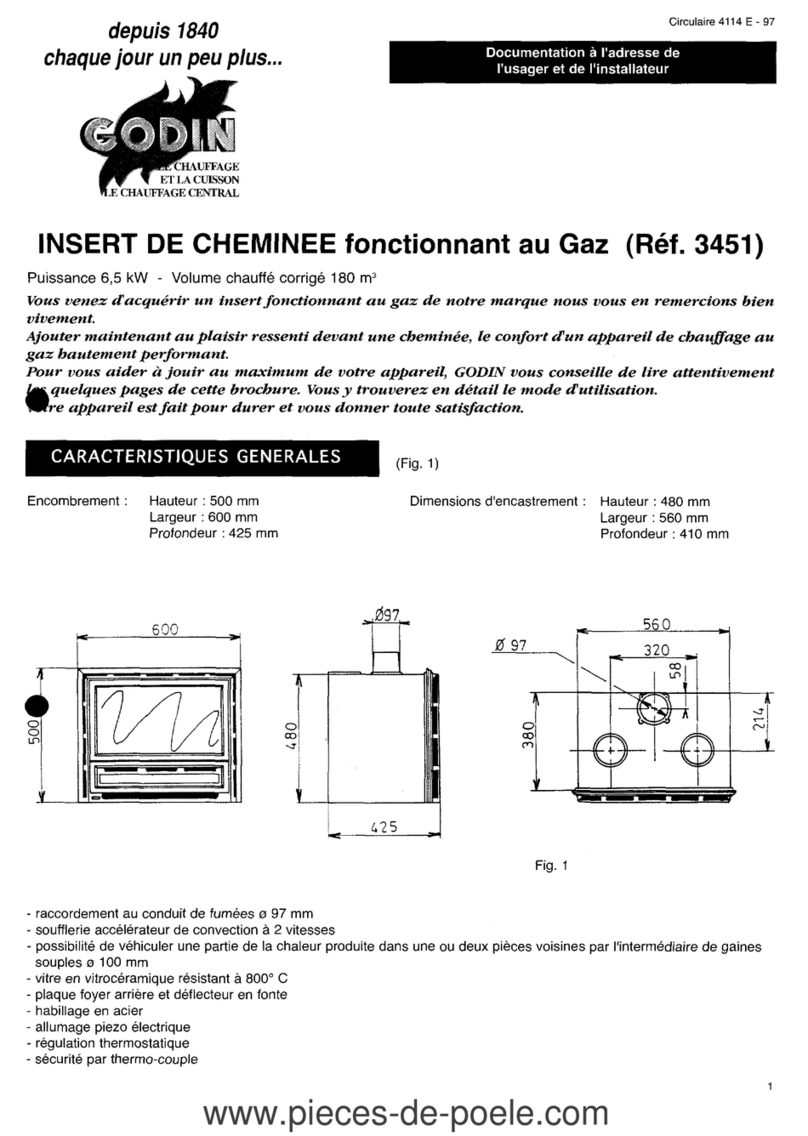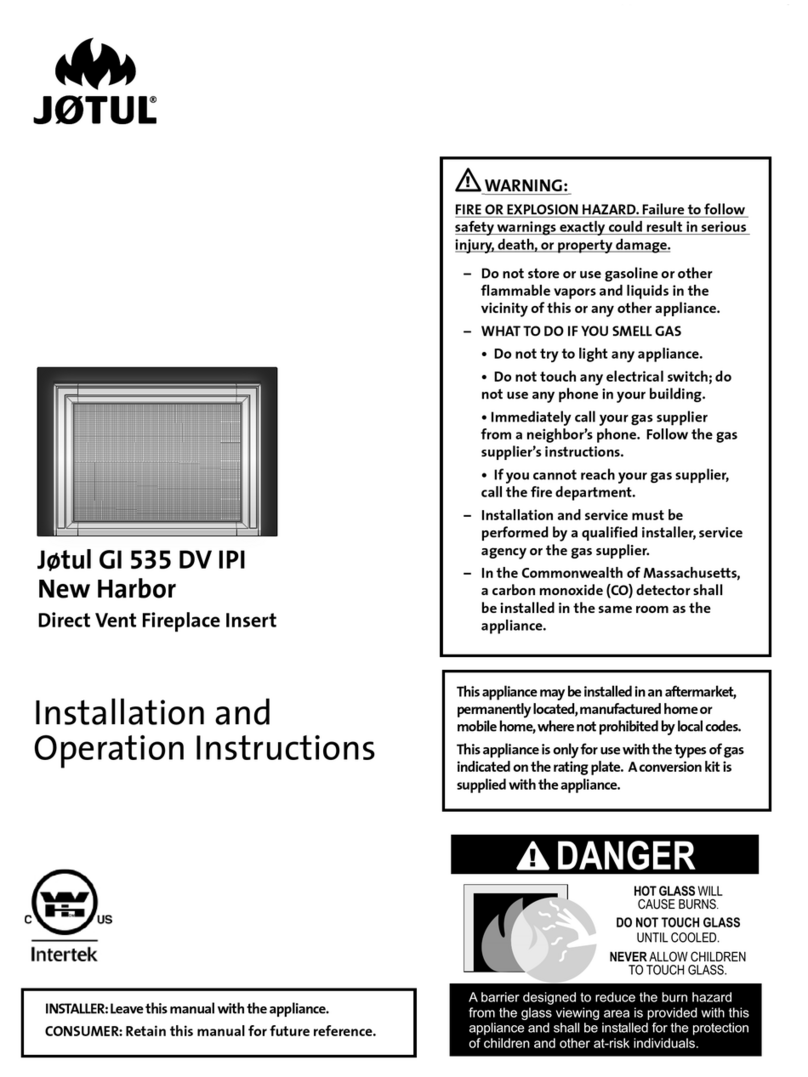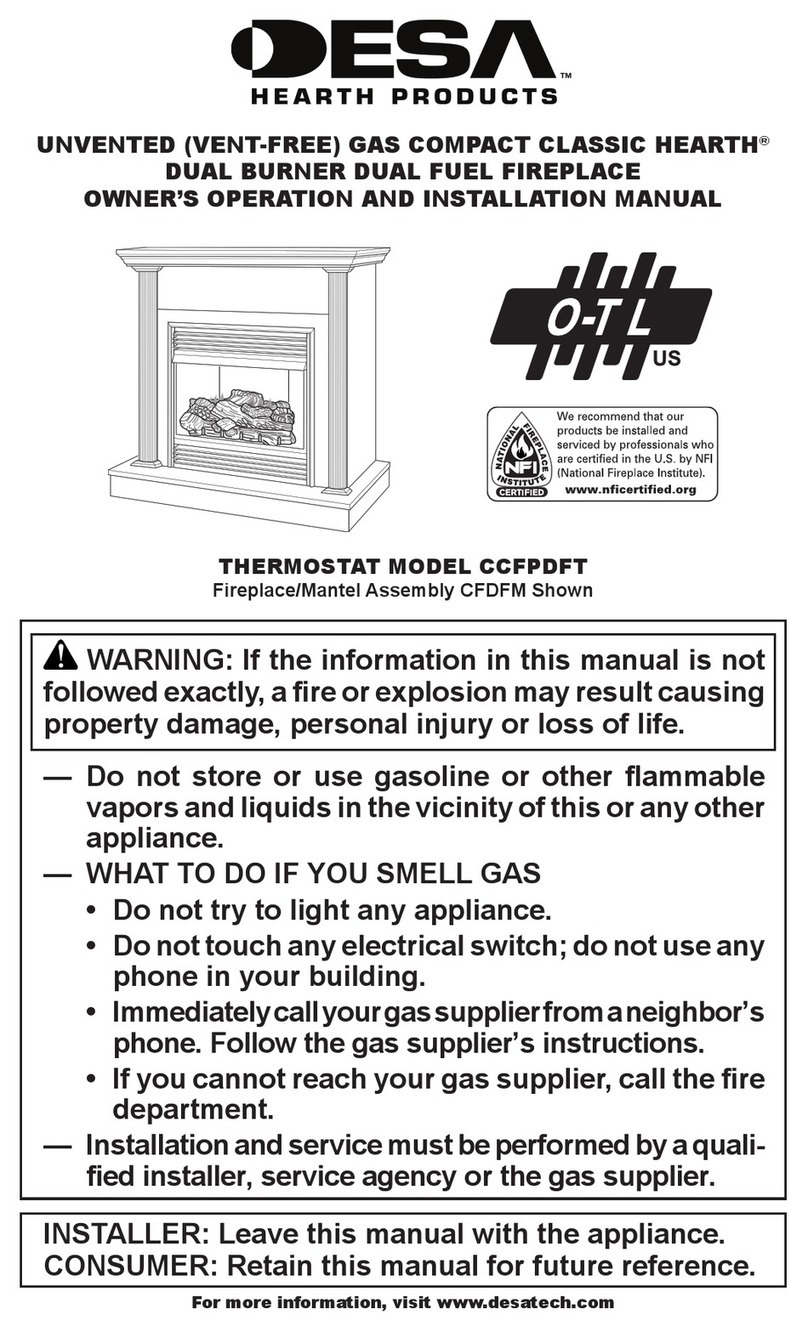HEALTH AND SAFETY PRECAUTIONS
SPECIFICATION
CHIMNEY
Please take care when installing the stove that the requirements of
the Health and Safety at Work Act 1974 are met.
Some types of fire cement are caustic and should not be allowed to
come into contact with the skin. In case of contact wash with plenty
of water.
If there is a possibility of disturbing any asbestos in the course of
installation then please use appropriate protective equipment.
There must not be an extractor fan fitted in the same room as the
stove as this can cause the appliance to emit fumes into the room.
As the output is below 5kW a permanent air supply is not normally
required. This stove is capable of intermittent operation.
This stove is not suitable for use in a shared flue system.
In addition to these instructions the requirements of BS.8303 and
BSEN 15287-1:2007 must be fulfilled. Local Authority Bylaws and
Building Regulations, including those referring to national and
European Standards, regarding the installation of Solid Fuel burning
appliances, flues and chimneys must also be observed.
The nominal output of the Country 4 is 4.0 kW (13,600 Btu/h). This
output is based on a 1.5 hourly re-fuelling cycle burning seasoned
hardwood logs. The average flue temperature at rated output is
210°C. The Flue gas mass flow is 3.7g/s and the stove weight is 62kg.
In order for the appliance to perform satisfactorily the chimney height
must not be less than 4 metres measured vertically from the outlet of
the stove to the top of the chimney. The internal dimensions of the
chimney should preferably be 175 mm (7 inches) or 200mm (8
inches) either square or round and MUST NOT BE LESS THAN 150
mm (6 INCHES).
If an existing chimney is to be used it must be swept and checked, it
must be in good condition, free from cracks and blockages, and
should not have an excessive cross sectional area. If you find that the
chimney is in poor condition then expert advice should be sought
regarding the necessity of having the chimney lined. If it is found
necessary to line the chimney then a lining suitable for Solid Fuel must
be used.
If there is no existing chimney then a prefabricated block chimney or
a twin walled insulated stainless steel flue to BSEN 15287-1:2007 can
be used either internally or externally. These chimneys must be fitted
in accordance with the manufacturers instructions and Building
Regulations.
Single wall flue pipe is suitable for connecting the stove to the
chimney but is not suitable for using for the complete chimney.
If it is found that there is excessive draw in the chimney then a
draught stabiliser should be fitted.
It is important that there is sufficient draw in the chimney and that
the chimney does not suffer from down-draught. When the chimney
is warm the draw should be not less than 2.5mm (0.10 inches) water
gauge (25 Pa). If in doubt about the chimney seek expert advice.
The stove must be connected to the flue using 125mm (5") i/d pipe.
This may be stainless steel, cast iron, or thick wall steel pipe. Straight
HEARTH AND FIRE SURROUND
CONNECTIONS TO FLUES
The stove must stand on a fireproof hearth and must not be situated
closer than 600mm from combustible materials to the sides or rear
above hearth level unless adequately fireproofed in accordance with
local building regulations. The hearth temperature can, in extreme
conditions, exceed 100°C and therefore a constructional hearth is
required. The positioning of the stove and the size of the hearth are
governed by building regulations for Class 1 appliances. These
building regulations state that the hearth must extend in front of the
stove by at least 300mm (12 inches) and to the sides of the stove by
at least 150mm (6 inches). If in doubt as to the positioning of the
stove expert advice should be sought either from the supplier or the
local building inspector. The fireplace must allow good circulation
of air around the appliance to ensure that maximum heat is
transferred to the room and also to prevent the fireplace from
overheating. A gap of 150mm (6 inches) each side and 300mm (12
inches) above the appliance should give sufficient air circulation. If a
wooden mantelpiece or beam is used in the fireplace it should be a
minimum of 460mm (18 inches), and preferably 600mm (24 inches)
from the appliance. In some situations it may be necessary to shield
the beam or mantelpiece to protect it.
In order for the fire to operate correctly and to allow for access,
there must be an air gap behind the appliance of at least 75mm, but
be aware that this distance will need to be greater in some cases to
meet Building Regulation requirements.
9
®
INSTALLATION INSTRUCTIONS
charnwood

